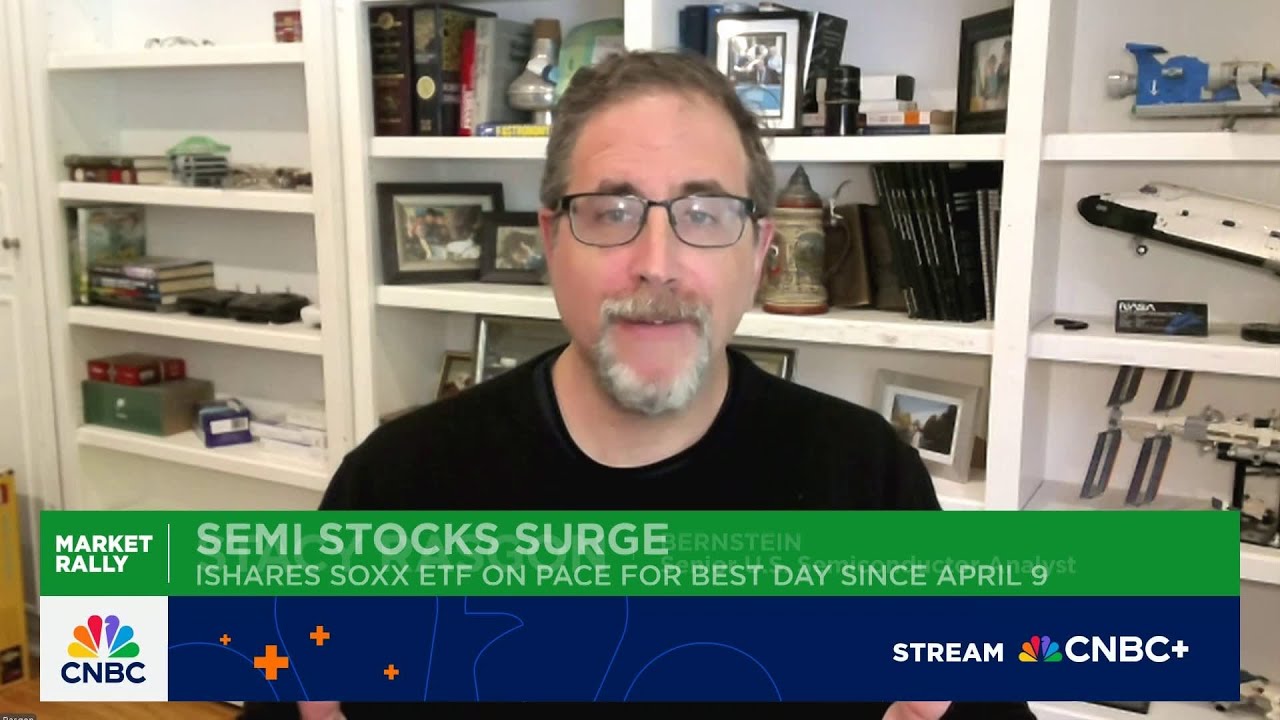Stacy Rasgon from Bernstein states that semiconductor demand remains strong and the sector has rebounded significantly, driven by ongoing investments in AI and technological advancements despite macroeconomic uncertainties. He favors AI-focused companies like Nvidia, Broadcom, and Qualcomm, while advising caution on more cyclical or traditional semiconductor stocks.
The video discusses the current state of the semiconductor sector amid recent positive developments, notably the pause in US-China tariffs, which has alleviated some supply chain concerns. Stacy Rasgon from Bernstein highlights that the semiconductor stocks have rebounded strongly, even surpassing pre-tariff levels and pre-election highs, despite the macroeconomic outlook being somewhat uncertain and potentially worse than before. This rebound has puzzled many analysts, given the cloudy economic environment, but the sector continues to perform well.
Rasgon explains that during the COVID pandemic, supply chain disruptions and demand creation led to stockpiling and unusual demand patterns in the semiconductor industry. Markets like PCs, smartphones, and industrial equipment experienced fluctuations, with some bottoming out and others showing signs of recovery. The automotive sector, which had been in a downturn, is also showing signs of stabilization, although it remains sensitive to cyclical changes and demand pull-forward, especially in China.
The analyst notes that companies like Intel and AMD have provided contrasting outlooks, with Intel acknowledging some demand pull-forward and AMD emphasizing strong underlying demand. Despite concerns about a potential peak in AI-related capital expenditures, Rasgon observes that actual spending by companies remains robust, supporting the view that demand for semiconductors, especially in AI, remains healthy. The overall demand environment appears resilient, driven by ongoing investments and technological advancements.
Looking ahead, Rasgon shares his investment perspective, favoring certain “AI names” like Nvidia, Broadcom, and Qualcomm, which are well-positioned to benefit from AI hardware demand. He points out that AI servers often enter the US tariff-free through Mexico, providing insulation from trade tensions. He is more cautious about cyclical and traditional semiconductor segments, such as analogs and some US-based companies, which are considered expensive or uncertain. Qualcomm, in particular, stands out as a cheap and diversified play with a solid AI and smartphone content story.
In conclusion, Rasgon believes that demand for semiconductors remains strong despite macroeconomic uncertainties and trade tensions. He sees opportunities in companies with exposure to AI and diversified revenue streams, while being more cautious about cyclical and traditional players. The sector’s resilience and ongoing technological investments suggest that the semiconductor industry could continue to perform well in the near term, supported by robust demand and strategic positioning.
